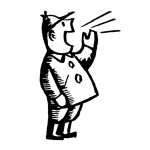Editor’s note: On Dec. 20, the Riverside County Board of Supervisors held a public hearing on the its proposed ordinance regulating nighttime light trespass, light falling across property lines.
The Board voted unanimously to approved the ordinance.
Hill resident Jeff Smith attended the hearing and offered the following comments.
The ordinance states that inadequately shielded outdoor lighting results in the waste of natural resources, light trespass, and that the general health, safety, and welfare of the population may be jeopardized.
The savings, as encouraged, resulting from the migration and mitigation of the waste of natural resources as referenced within the proposed ordinance, is a misrepresentation of fact.
As written, the ordinance will accomplish little electricity conservation given that the vast majority of lighting would likely be classified as providing security and would have shields installed or the light sources redirected except to sound politically correct. Certainly folks will not remove security lighting.
What’s the true intent of the ordinance? If it’s both conservation and elimination of light trespass, then encourage or reward the use of motion and noise sensors as a primary option to light shields and repositioning. It would preserve the security solutions of property owners, effectively reducing light trespass and, if you must, encourages effective conservation.
Common sense would dictate visible light transmission be a governed activity of the county; however, its regulation as written is not limited to visible light and enters into the periphery of the electromagnetic spectrum. As such the board appears to have over extended its purpose and reach.
The ordinance makes no distinction between visible and infra-red light sources or transmission. Security camera infra-red light sources are extremely difficult and practically impossible to shield.
The ordinance specifically includes diodes; encompassing infra-red light diodes. The ordinance unreasonably limits effective deployment of most security surveilance in sensitive or confidential applications. If such light impacts private, government or research applications, technology should digitally encrypt or mitigate any interference much in the same way as home-based cordless phones do, the less intrusive option. The ordinance must specifically exempt infra-red and nonvisible light applications.As for electricity conservation, it should employ progressive measures starting with voluntary compliance moving to economic incentives, then as a last resort, at the point of a fine, certainly not imprisonment.
Perhaps such conservation is best left to an electric utility bill and removed from this draft ordinance. As written, it only serves to mask the problem at hand.
Remove the red herring or offer effective and enduring conservation and light trespass mitigation through motion and noise switches.
As for lighting jeopardizing the public safety, existing vehicle and public nuisance code provides adequate governance. Why reinvent the wheel?
A proper solution should be administered.
Shields and redirection should be employed as an option. Motion or sound sensors, and infra-red or digital light sources should be encouraged as another and as such exempt from enforcement.
Jeff Smith
Pine Cove










